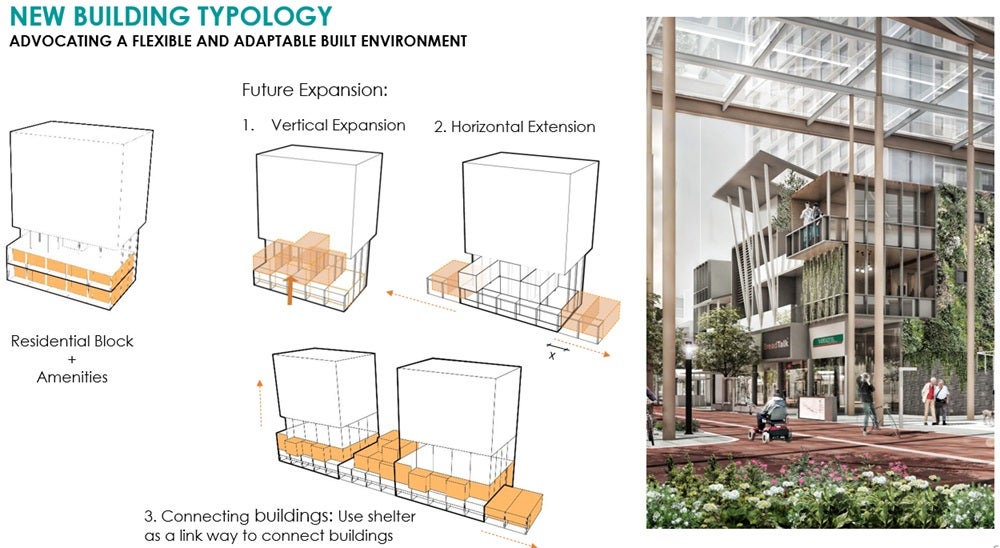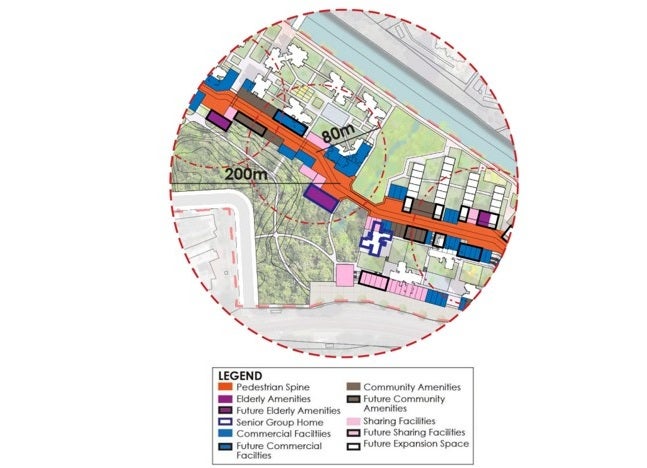Typology Study for Public Housing in Dover
(2015 - 2017)
Principal Investigator: Prof HENG Chye Kiang
Co-PIs: Assoc Prof FUNG John Chye, Dr MALONE-LEE Lai Choo, Assoc Prof CHO Im Sik
Introduction
In the face of land scarcity, an ageing population, and the emergence of disruptive innovations, planning high-density residential neighbourhoods in Singapore presents increasingly complex challenges. These factors necessitate rethinking current planning models to ensure greater flexibility and adaptability for unforeseen future changes. This paper examines three interrelated themes from a recently completed research project: creating an age-friendly environment, fostering a culture of sharing and collaboration, and promoting a car-lite environment. The project explored innovative typologies for a future residential neighbourhood comprising nearly 8,000 dwelling units.

Using a comprehensive methodology, including literature reviews, expert interviews, site observations, analyses of local and international case studies, design research, and an evaluation of existing townships, the study culminated in three key outcomes: a design brief for future residential communities, a design framework to guide future housing projects, and a design proposal for a street-based residential neighbourhood typology.
The findings advocate for the vision of a one-minute street-based township that addresses key planning and design strategies such as:
- Designing a street-based residential neighbourhood where social, commercial and healthcare amenities are within easy walking distance;
- Offering senior-friendly housing options;
- Providing accessible coworking spaces, start-up units, and mobility hubs;
- Supporting both personal and shared modes of transport.
The design proposal also outlines strategies to ensure that residential neighbourhoods remain flexible and adaptable to evolving needs.



